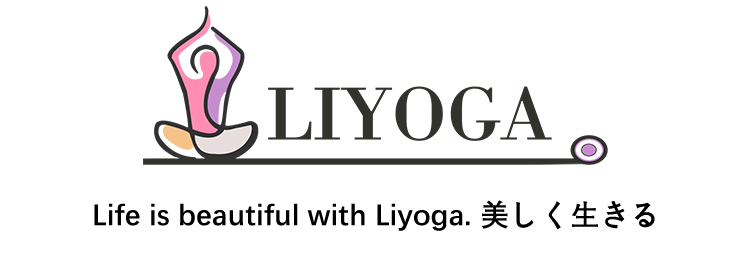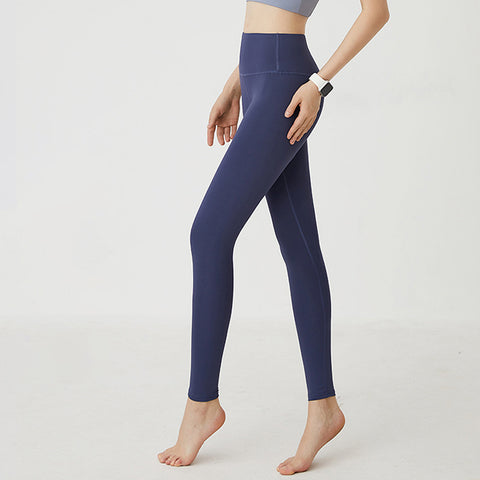Introduction to Yoga for beginners.
First, you need to know about yoga
The origins of yoga
The origins of yoga are very ancient, dating back about 4,500 years. Several statues reminiscent of yoga poses, such as sitting in meditation, have been discovered in the ruins of the Indus civilization city of Mohenjo-Daro, and these are said to be evidence of the origin of yoga.
Over the years, yoga breathing techniques and poses (asanas) have developed into a way to deepen meditation. New genres of yoga are constantly being created as tools for living a healthy and fulfilling life.
Yoga Interpretation
Yoga means "to join, connect, or join" in Sanskrit. We are part of nature, in other words, nature itself. It also means "harmony," "unity," and "balance," and the idea of yoga is that everything, including ourselves and everything else, our mind and body, is connected.
The purpose of yoga
The original purpose of yoga is to balance the mind and body through the harmony of breathing, poses and meditation, to free the mind from anxiety and suffering and to stabilize the emotions.
By making yoga a habit, you can also improve various ailments such as chronic fatigue, lethargy, stiff shoulders, headaches, back pain, insomnia, general lethargy, and poor circulation.
Types of Yoga
In general yoga classes, the mainstream is Hatha yoga, which is a form of yoga that involves physical activity.
Other styles include Ashtanga yoga, Sivananda yoga, Yin yoga, restorative yoga, Aanga yoga, Kripalu yoga, prenatal yoga, SUP yoga, and more. There are many different styles of yoga.
First, try something that interests you or that you feel a connection with. It is also recommended to go to a trial class for beginners. Once you have become accustomed to the basic poses, you can gradually find your own style.
Yoga is recommended for these people!
・People who want to relieve mental anxiety and pain ・People who want to improve their mind and body ・People who want to improve their posture and pelvic distortion ・People who suffer from constipation, chills, and swelling ・People who get tired easily ・People who have recently become irritable ・People who want to lose weight in a healthy way ・People who are not good at exercise but want to build muscle
The benefits and effects of yoga
Can adjust body posture and pain
As you continue, your muscles and core will be strengthened and your body will be adjusted. As a result, your posture will improve and your form will become more beautiful. Poses like the ones in the photo are difficult for beginners, but even simple poses will make your body feel more relaxed after a few tries.
Regulates autonomic nervous system disorders
Yoga breathing techniques are said to enhance the parasympathetic nervous system and stabilize the mind. The autonomic nervous system is regulated, which makes you feel relaxed and calm. For those who suffer from migraines, constipation, irritability, insomnia, and other problems caused by autonomic nervous system disorders, self-care through yoga is recommended.
Increased focus and less emotional overwhelm
Meditation can temporarily stop you from thinking about all sorts of things. Doing it repeatedly can also improve your concentration, calm your mind, and help you control your emotions. While doing yoga, you will feel comfortable being yourself, and you will be less likely to worry too much about your surroundings or accumulate stress.
Improves metabolism and makes you less susceptible to fatigue
Yoga improves blood circulation, which increases metabolism and activates hormone secretion. It also improves lymphatic flow, and you can be sure to gain muscle strength and flexibility. Because it naturally strengthens the body, it also helps to make you less prone to fatigue. If you have poor circulation or get tired easily, try yoga.
Effective for dieting
As mentioned above, blood flow improves, autonomic nervous system disorders are regulated, and muscle is built. These actions are also effective for dieting and preventing swelling.
Disadvantages of Yoga
Don't expect immediate results
Not suitable for short-term dieting
・If you try to force yourself into a pose, you may hurt yourself.
If you have problems like "it's hard to lift my right shoulder" or "it hurts to twist my waist," forcing yourself into a pose can put too much strain on your body. It's important to take your time and proceed as slowly as you can without rushing.
Also, for those who want immediate, visible results, yoga may not be enough.
Simple questions about yoga that you are too embarrassed to ask
Can I do it even if I'm stiff?
Do you have the impression that you need to be flexible to do yoga? We often see photos of highly flexible people striking beautiful poses.
But! Yoga is not stretching, so there is no rule that says "You have to stretch your legs as much as shown in the example" or "You have to bend forward." Incorporate breathing techniques and move your body within a comfortable range.
Even if you are stiff, don't worry. If you keep doing it, you will naturally gain flexibility over time.
It's important not to imitate and to accept!
You don't have to complete the poses beautifully. It's okay if you can't do it like the instructor. It's okay if you can't do it the same way when you're tired or before your period or when you're not feeling well. The most important thing is to continue at your own pace.
Yoga is about accepting your own inability to do things and the stress you feel without denying them.
Does age and athletic ability matter?
Some yoga poses are physically demanding, but there are also many that can be done in a relaxing way. There is no need to worry if you are not getting enough exercise lately or are not confident in your athletic ability. You can easily start yoga in your 40s or 50s, and continue even in your 60s and 70s.
Yoga is the best way to gain control over your body and mind in the long run.
How is it different from stretching and Pilates?
Pilates focuses on the structure of the body and trains the muscles and core. Stretching is an exercise that loosens and lengthens muscles to increase flexibility.
On the other hand, yoga improves posture and mental well-being while relaxing. Its greatest feature is that it can stabilize the mind while building the body at the same time.
How to get the most out of yoga?
Morning or evening is recommended
With yoga, consistency is more important than frequency .
It's probably best not to push yourself too hard at first.
It's not a bad idea to just check your physical condition on a daily basis and do it when you feel like it.
If you feel good, you can do it every day .
Depending on your condition and mood, yoga will become more and more enjoyable as you challenge yourself with different poses.
If you want to get the most out of your yoga practice, it is recommended that you do it in the morning or evening .
Doing yoga while basking in the morning sun clears your mind and improves blood circulation.
Doing yoga in the morning will help keep your metabolism high throughout the day .
The benefit of doing yoga at night is that it activates the parasympathetic nervous system.
When your parasympathetic nervous system is active, you can sleep soundly at night.
If you want to relieve the fatigue of the day, try doing yoga in the evening .
Depending on your goals, you can decide whether to do yoga in the morning or in the evening.
If you are feeling well, there is no problem with going both in the morning and at night.
Wait two hours before and after yoga before eating
Yoga is a form of exercise that greatly moves the muscles and inner muscles of the body. In order to efficiently gain energy and get the most out of the exercise, it is best to not eat for two hours (or at least one hour) before yoga and to do it on an empty stomach.
Furthermore, if you exercise on a full stomach, you may feel sick or nauseous. Yoga involves moving the entire body, and some poses even press and stimulate the internal organs.
If you are full at such times, it will put a strain on your stomach and internal organs, so it is best to finish eating at least two hours before yoga (or at the latest one hour before).
When you feel really hungry, you can reduce the strain on your body by eating foods that are relatively easy to digest, such as tofu, natto, and soup.
Focus on nasal breathing and incorporate meditation
Yoga is not effective if you just move your body without thinking about it.
Make sure you check to see if you are breathing through your nose.
The benefits of yoga will be enhanced if you take in clean air while performing poses .
People who are just starting to do yoga tend to be overwhelmed just by holding the poses.
Some people unconsciously hold their breath, but nasal breathing is the key to yoga.
Even if the pose is correct, if you don't breathe the effect will be diminished.
Beginners especially should be aware of breathing through their nose.
It is also recommended to actively incorporate meditation in addition to poses.
Meditation is very important in yoga.
If you clear your mind through meditation before performing the poses, you will experience a higher quality of exercise .
Don't think too hard about it, just start doing yoga!
We recommend that you take the first step with a light-hearted attitude, such as wanting to try it or wanting to relax. Beyond the direct relaxation effects and physical changes, you will surely notice some changes in yourself when you do yoga, such as in your attitude towards food and the way you interact with others. Look forward to these changes, and give it a try!






























